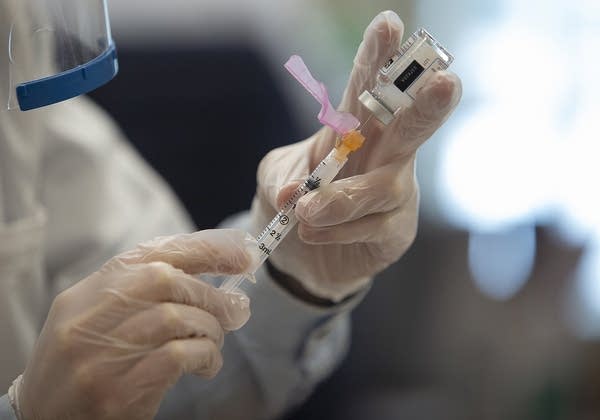Minnesota hospitals say state's vaccine distribution is at 'untenable crossroads'

Go Deeper.
Create an account or log in to save stories.
Like this?
Thanks for liking this story! We have added it to a list of your favorite stories.
Updated: Feb. 6, 7:45 p.m.
A coalition of Minnesota’s hospitals says the state’s COVID-19 vaccine distribution system is hurting patients, and is asking the state Health Department give more shots to health care providers.
In a letter to Health Commissioner Jan Malcolm, the Minnesota Hospital Association wrote that some clinics haven’t received doses in days, leaving them unable to vaccinate its oldest, most vulnerable patients.
“Despite our ongoing partnership and our tireless efforts to work in concert with the state, we believe the vaccine allocation process has reached an untenable crossroads,” wrote the association’s President Dr. Rahul Koranne. “The lottery system is hurting patients and communities and allocations to health care providers must increase.”
Turn Up Your Support
MPR News helps you turn down the noise and build shared understanding. Turn up your support for this public resource and keep trusted journalism accessible to all.
The hospital association’s Friday letter marked a notable split in partnership between the state and hospitals to get Minnesotans vaccinated — though in a follow-up letter on Saturday, Koranne apologized to state leaders for not "seeking a direct dialogue," and pledged that "our partnership and collaboration will continue as we vaccinate."
In the state’s initial rollout, hospitals served as hubs for vaccine distribution, giving the vast majority of doses to give to staff and, more recently, to people in private practice, such as dentists and doctors unaffiliated with a hospital system.
In January, the state opened up vaccinations to people 65 and older as well, though most Minnesota hospitals have been focusing on their most elderly patients first, leaving many people between 65 and 75 to rely exclusively on the state’s vaccination sites for shots. Those appointments are secured through a lottery system set up by the state.
Meanwhile, demand for vaccines far outpaces supply. On a weekly basis, the state has been in charge of determining where vaccines should go, and how many health care systems or local public health departments should receive.
“My members are increasingly put in the impossible position of telling their patients and their communities that they do not have vaccines for them,” wrote Koranne on Friday. “We have members who have had no vaccine for three weeks, leaving clinic infrastructure that exists to rapidly get shots in arms idle.”
In a statement, Malcolm said MDH notified the hospital association in an email Friday that there would be changes in a “randomized process” for small and mid-size providers.
“Starting with vaccines arriving the week of February 15, we will be transitioning to a process where the eight regional health care coalitions will work with the providers in their regions to direct COVID-19 vaccine allocations based on provider capacity, community needs and statewide priorities,” Malcolm said. “With this new process, these groups will be responsible for advising MDH which specific sites in their region should receive vaccines and where they should be shipped.”
The health department also noted that of the Minnesota residents who have received at least one dose of the COVID-19 vaccine, 53 percent live outside the Twin Cities metro. And the agency said Saturday that more than half of available vaccine doses are being sent to hospitals and clinics, with 10 percent going to community vaccination sites.
In spite of state guidance that health care providers at high risk of getting the virus and people living and working in long-term care should be getting vaccines first, some Minnesota hospitals have been giving shots to employees who are at low risk of getting COVID-19 on the job — teleworkers and employees with no patient contact — a practice that has been under scrutiny by the state Health Department.
Koranne said that hospitals and clinics have been preparing to give vaccines for months, and that their storage and vaccination capacity has been standing idle as the state has shifted doses to large vaccine sites, where people must win a slot in a lottery to get vaccinated.
This weekend, the state is administering roughly 9,000 doses at a single site in Minneapolis, and plans to give vaccines out in Duluth, Minn., and southern Minnesota soon as well.
Koranne said these locations are out of reach for people who live in the western part of the state or who are in rural areas, and wants the state to rethink the lottery.
“Maximizing the existing infrastructure and role of clinics, hospitals and health systems in vaccination allows vulnerable populations, including Minnesota's seniors and the disabled, to receive their vaccines at their local clinics where they regularly receive care,” he said.


